On September 10, 2019, the earth trembled. Especially the one under the feet of many SEO professionals, and this is due to an official announcement from Google about a new way of identifying “nofollow” links. As of March 1, 2020, the rel=”nofollow” link attribute will no longer be a directive, but an indication to indexing robots.
In addition, Google has made it possible to mark links with new attributes: rel=”ugc” and rel=”sponsored,” which, since September, have been pointers considered for ranking purposes. The news has triggered an avalanche of questions, speculation and doubts. At this point, one thing is certain: this is another way for Google to better understand the web and how to link.
History of the rel=”nofollow”
attribute.
On January 18, 2005, Google introduced the rel=”nofollow” attribute as a way to combat user-generated spam. The blow was aimed mainly at sites where it was possible to add a link to a page yourself. Any link leading to a particular site is treated by robots as a user’s “vote” for that site.
The idea is that if a site is “voted” by a very large number of users from various sources, Google gets a signal that such a site is valuable. But what if the “votes” are cast by the site owner, for example, by leaving a link in a comment, forum or directory? Such behavior is called manipulation of search results, which Google does not look upon with a favorable eye.
In practice, this meant that each unwanted link was marked as follows:
<a href=”http://www.example.com/” rel=”nofollow”>Link text</a>
From now on, the links were divided into:
- nofollow – do not carry the power of the linked domain – the robot does not follow the link,
- dofollow/follow (not marking the link also indicated this attribute) – carry the power of the linked domain – the robot follows the link,
.
.
And that’s it.
Google has convinced software developers to implement this solution on their sites.
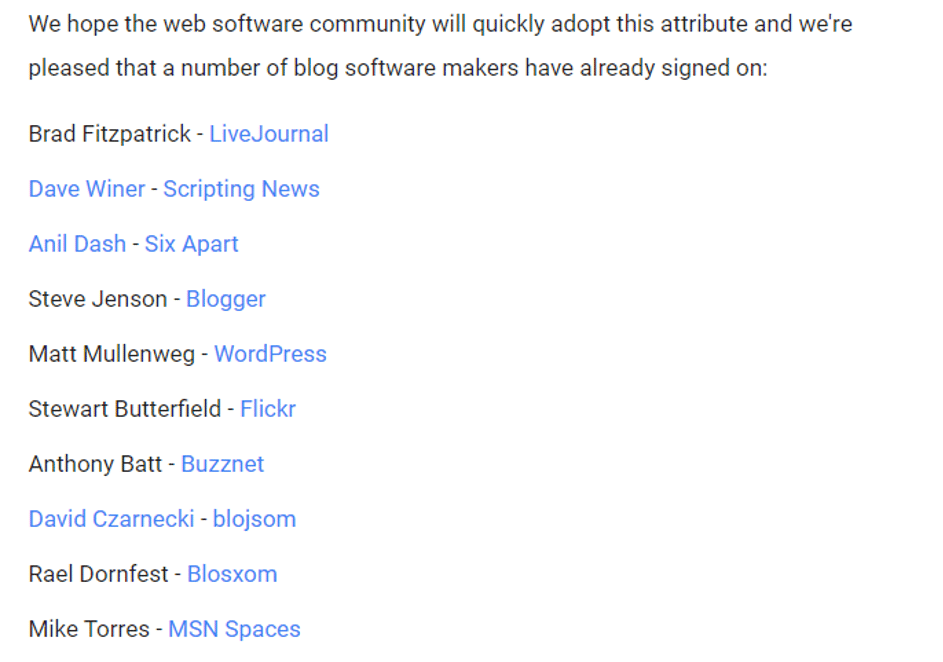
Thus, in 2005, the rel=”nofollow” attribute became a binding directive. It informed Google’s robots that backlinks tagged in this way should not be taken into account when considering rankings and that bots should not follow them, but to be clear – it is not a negative “vote” for the site.
Rel=”nofollow” in external linking
.
The rel=”nofollow” attribute has been used for the past dozen years to mark backlinks that Google’s robots were supposed to disregard in evaluating the linked site. Whether they are automatically generated in blog comments or manually added in sponsored posts, the principle is always the same – the robot is supposed to not follow them and not consider them in the ranking.
Barry Schwartz confirmed that nofollow links were not considered when evaluating a website.
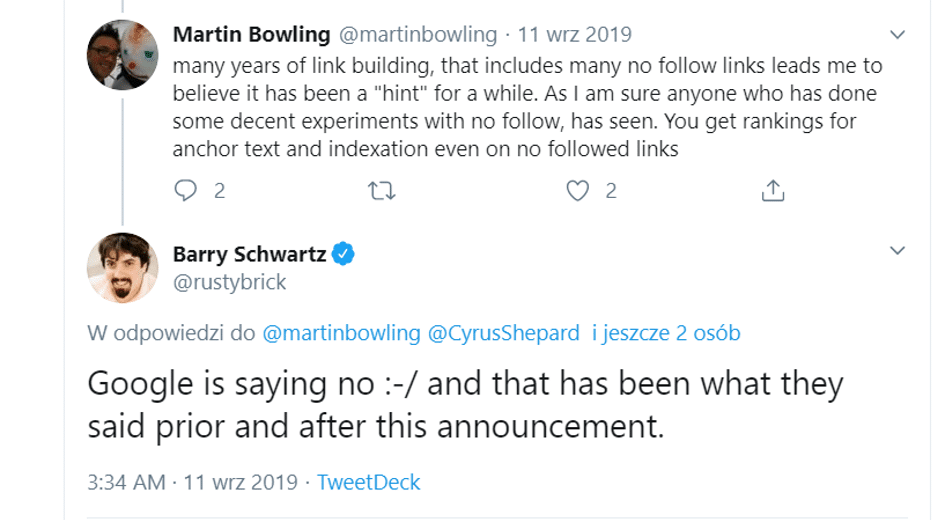
This is the case in theory. In practice, the matter is not so simple. Nofollow links are the subject of much discussion among specialists, and actually it is not surprising. On the one hand, links marked with this attribute bring nothing from the SEO point of view. On the other hand, they testify to a natural linking profile. So what to do in this situation? Add rel=”nofollow” links or focus exclusively on rel=”dofollow”?
As is usually the case – where two SEO specialists, there are three opinions, actually… it depends. However, I will stand in defense of nofollow links for two reasons:
- Nofollow links encourage visitors to your site = more site traffic. No matter what attribute the link has, chances are that users will go and check out your site.
For example, if you speak under an expert blog article, signing your name or company name, it works in a similar way to exchanging business cards at a meeting.
An example of a link that leads to a business card page:
 .
.
- A fair, balanced linking profile – since links are treated by Google as “votes” for your site, would users only vote from sites that have a dofollow designation? In an ideal world yes, in the real world not quite so much anymore. Following this line of thought, it’s easy to conclude that nofollow links are a way to make your linking profile as natural as possible.
An example of a balanced domain linking profile:
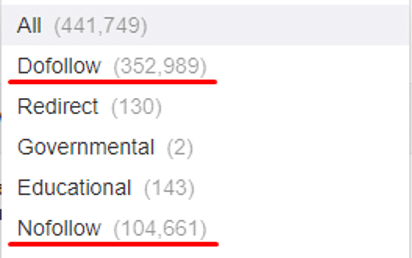 .
.
However, it is worth noting that the sites should be thematically related. An example of a link added to a fashion blog that leads to a site about big-box store design:

In this case, one would have to wonder whether a link to a site offering big-box store design on a fashion site is definitely a good choice.
Rel=”nofollow” in internal linking
.
The rel=”nofollow” link attribute is also used in internal linking. Its main task is to block robots from going to the selected subpage. This attribute is most often used to mark login, registration or, for example, privacy policy pages. These are addresses that are useless from an SEO point of view (login/registration) or constitute duplication (privacy policy).
Following Google’s announcement that rel=”nofollow” attributes would no longer be a directive, but a suggestion to robots, there were many questions and doubts about using this designation in internal linking. According to the company, the changes regarding nofollow mainly affect outbound links, and rel=”nofollow” links will still work in internal linking.
.
It’s worth mentioning that in 2013 Matt Cutts confirmed that it doesn’t make sense to use rel=”nofollow” for a page containing a login form.
At this stage, it is worth mentioning that after the implementation of the rel=”nofollow” attribute, specialists abused it to manipulate the internal PageRank of the page (PageRank sculpting).
Each site has an internal PageRank that flows through the pages within the site. PageRank sculpting consisted of blocking the PR flow with rel=”nofollow”. This solution allowed internal PR circulation only between dofollow pages.
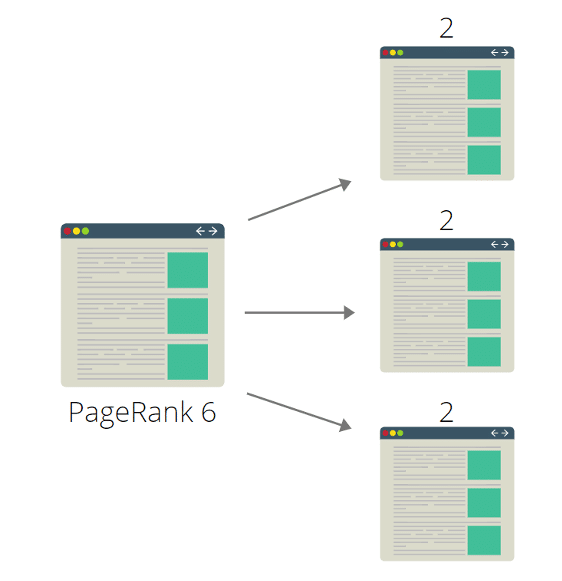
If a page was tagged with rel=”nofollow”, the internal PageRank was split between rel=”dofollow” pages (Figure 2).
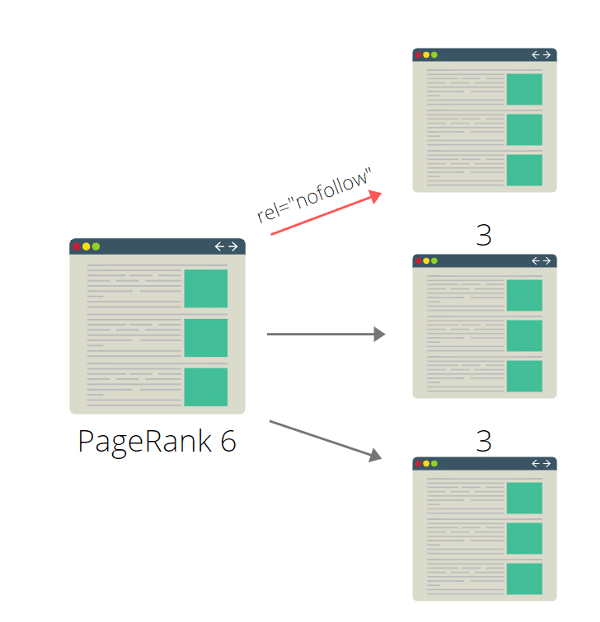
In 2009, Matt Cutts announced significant changes – unless the PageRank attribute is shared by all pages.
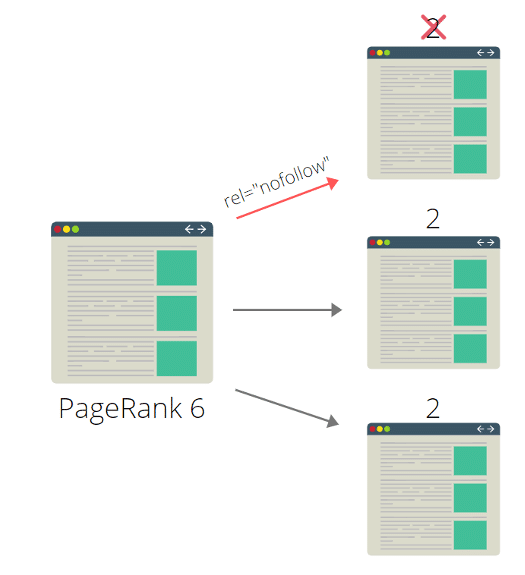 .
.
According to John, using rel=”nofollow” attributes to manipulate internal PR is a waste of time.
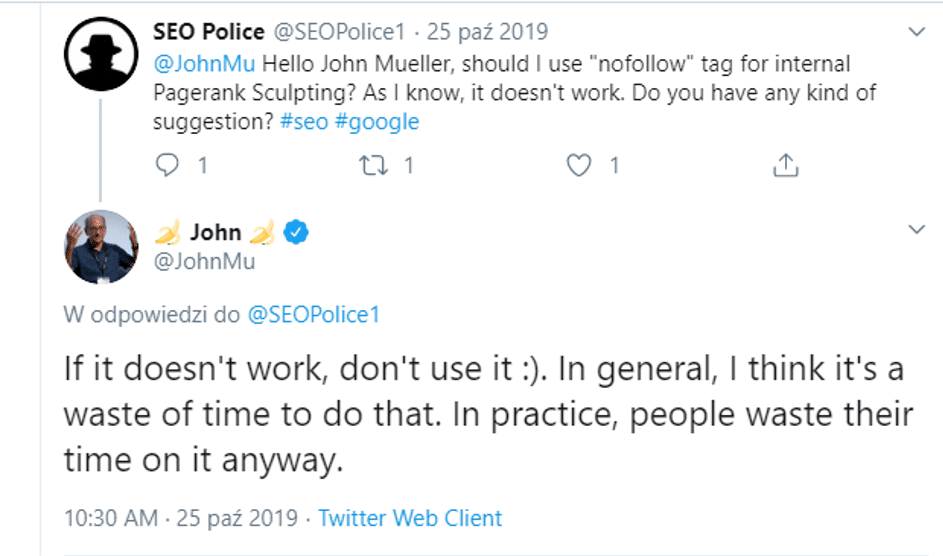
Clear information is available in the new documentation on the rel=”nofollow” attribute:
For links on your own site, use a robots.txt file as described below.
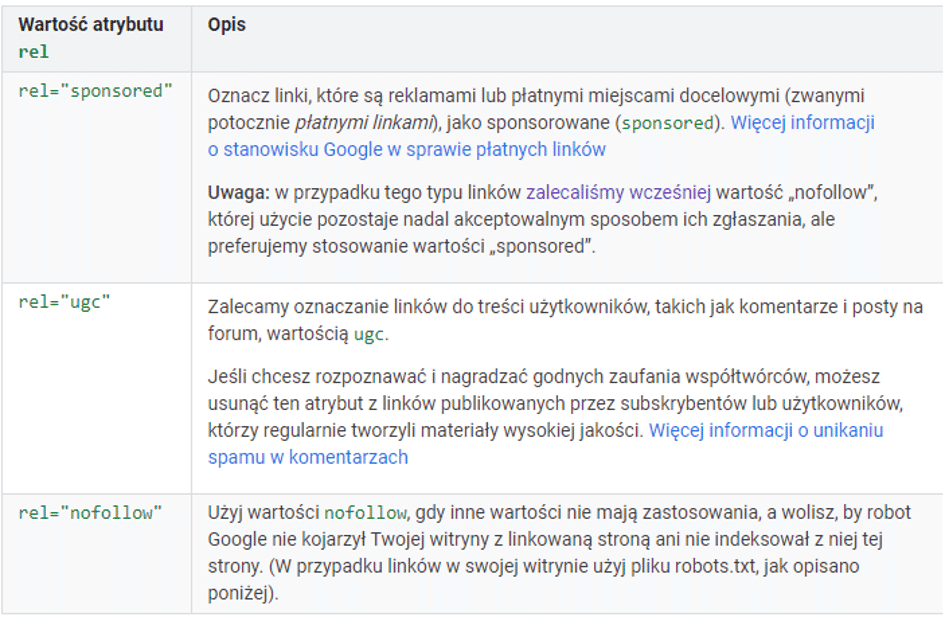
Those who rely on nofollow solely to block page indexing (which was never recommended) should use one of the most reliable mechanisms listed in our article – block URLs from the Google help page.
However, if you don’t want robots to access your site, check out the tips for blocking content from them:
 .
.
How to understand this contradictory information from Google? In my opinion, conclusions about the operation of the rel=”nofollow” attribute in internal linking will be possible to assess only after March 1, when the directive cited earlier will no longer be in effect.
Rel=”nofollow” – directive versus suggestion
.
More than 15 years ago, Google introduced the ability to mark links with rel=”nofollow” as a way to combat unnatural linking to a site (comment spam and sponsored links). This attribute was treated by Google as a directive. This means that links tagged in this way will not be considered as ranking signals.
According to official information, from March 2020 rel=”nofollow” will only be a hint for bots when crawling and indexing pages by robots, and the directive will no longer apply.
Why has Google changed the way it interprets nofollow links? Here is the company’s explanation:
Links contain valuable information that can help us improve search, such as how the words in the links describe the content they point to. Looking at all the links we encounter can also help us better understand unnatural linking patterns. By moving to a hint model, we no longer lose this important information, while still allowing site owners to indicate that certain links should not be treated as first-class endorsements.
And while these are only suggestions, backlinks can be taken into account when determining rankings – it’s all up to Google. The company assures that the new designations will not change the way they treat nofollow links, such as in blog comments:
For the most part, the move to a hint model will not change the nature of how we treat such links. Basically, we will treat them as we did before with nofollow and will not consider them for ranking purposes. We will continue to carefully evaluate how to use links in a search engine, as we have always done, and as we have done in situations where no information has been provided.
What impact this will have on SEO results in practice will become clear soon.
New attributes rel=”sponsored” and rel=”ugc”
.
Until September 2019, two ways of marking links were known:
- nofollow,
- dofollow/follow,
.
.
Currently, we have four methods of marking a link:
- Nofollow – recommended when the UGC (user generated content) and sponsored (sponsored) designation are not applicable, and the owner does not want the site to be linked to the linked page. For internal linking, Google recommends using a rule in the robots.txt file instead of the rel=”nofollow” designation:
<a href=”http://www.example.com/” rel=”nofollow”>Link text</a>
- UGC – recommended for tagging user-generated content, such as blog comments or forum posts:
.
<a href=”http://www.example.com/” rel=”ugc”>Link text</a>
- Sponsored – recommended for tagging ads or paid links to a site – in short, these are all links designed to manipulate a site’s ranking and position in organic search results ???? (https://support.google.com/webmasters/answer/66356?hl=en&visit_id=637155634451254384-2025758338&rd=1):
<a href=”http://www.example.com/” rel=”sponsored”>Link text</a>
- Dofollow/follow – recommended to be used for ordinary links, without any criteria:
.
<a href=”http://www.example.com/” rel=”dofollow”>Link text</a>
<a href=”http://www.example.com/”>Link text</a>
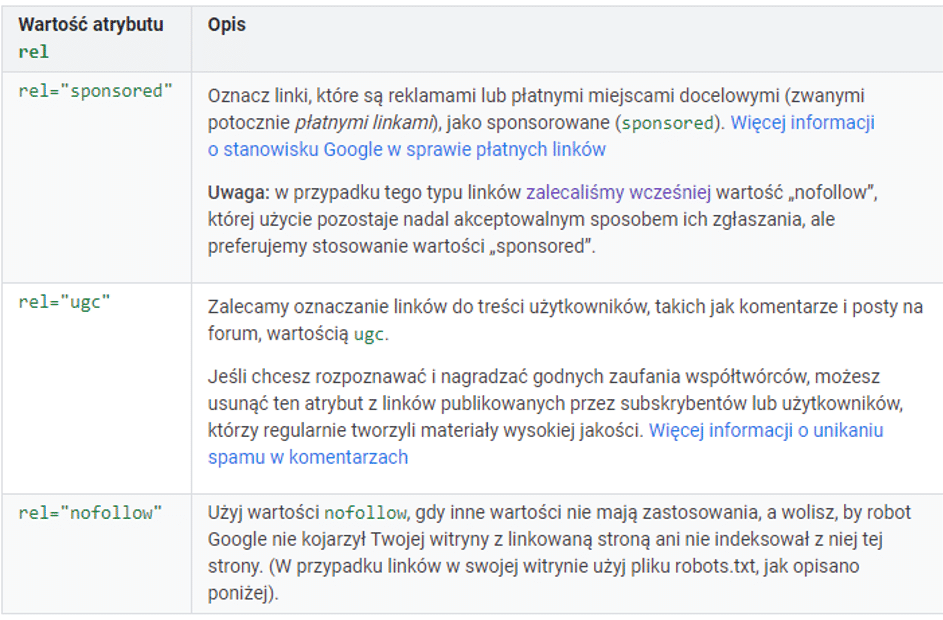
Major questions and answers about new attributes
.
The official statement from Google also included answers to the most important questions about the new attributes and how nofollow works. Here are some of them:
- When do the changes take effect?
.
All link attributes rel=”nofollow”, rel=”sponsored” and rel=”ugc” already work as pointers to be considered for ranking purposes and can be used on the site. As of March 1, 2020, rel=”nofollow” will become guidelines for indexing and crawling pages by robots.
- Is it necessary to change all added links rel=”nofollow” to rel=”UGC” or rel=”sponsored”?
.
Absolutely no need to change any nofollow links you already have.
- Can you use more than one attribute for a single link?
.
Yes. The new attributes (rel=”sponsored” and rel=”ugc”) can be used with each other and with rel=”nofollow”. For example, you can use rel=”sponsored” simultaneously in a situation where the link is user-generated and a sponsored link at the same time:
<a href=”http://www.example.com/” rel=”sponsored ugc”>Link text</a>
- What if the sponsored link is marked with rel=”nofollow”?
.
Actually… nothing. You can continue to use rel=”nofollow”, although Google recommends using rel=”sponsored” in this situation.
- What if the wrong attribute is used?
.
According to Google, there is no wrong attribute, except for sponsored links.In practice, this means that any advertisement or sponsored link should be marked with rel=”sponsored” or rel=”nofollow”.
The entire Q&A section is available at: https://webmasters.googleblog.com/2019/09/evolving-nofollow-new-ways-to-identify.html.
New link attributes – summary
.
All indications are that Google wants to get even better at learning how to recognize particular types of outbound links and the links between them.
Today we’re announcing two new link attributes that provide webmasters with additional ways for the search engine to identify the nature of individual links.
I make no secret of the fact that this comes as a surprise to me. It seemed that Google was very good at finding patterns and recognizing links. Could it be that it needs confirmation of its findings? Or is it counting on publishers and specialists to identify the links they pay for themselves, hoping for extra points from Google?
Proper link classification will certainly affect the evaluation of the entire linking profile. Will UGC links not be taken into account at all? Will sites receive a penalty for too many sponsored links? What will this look like in practice? As many specialists, as many opinions. In my opinion, at this stage it is difficult to make a clear decision. We are left to wait and observe.
 Martyna Zagórska
Martyna Zagórska